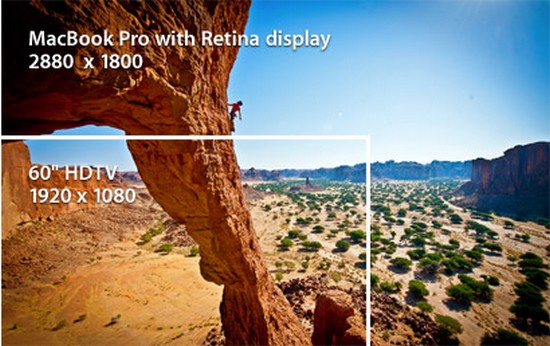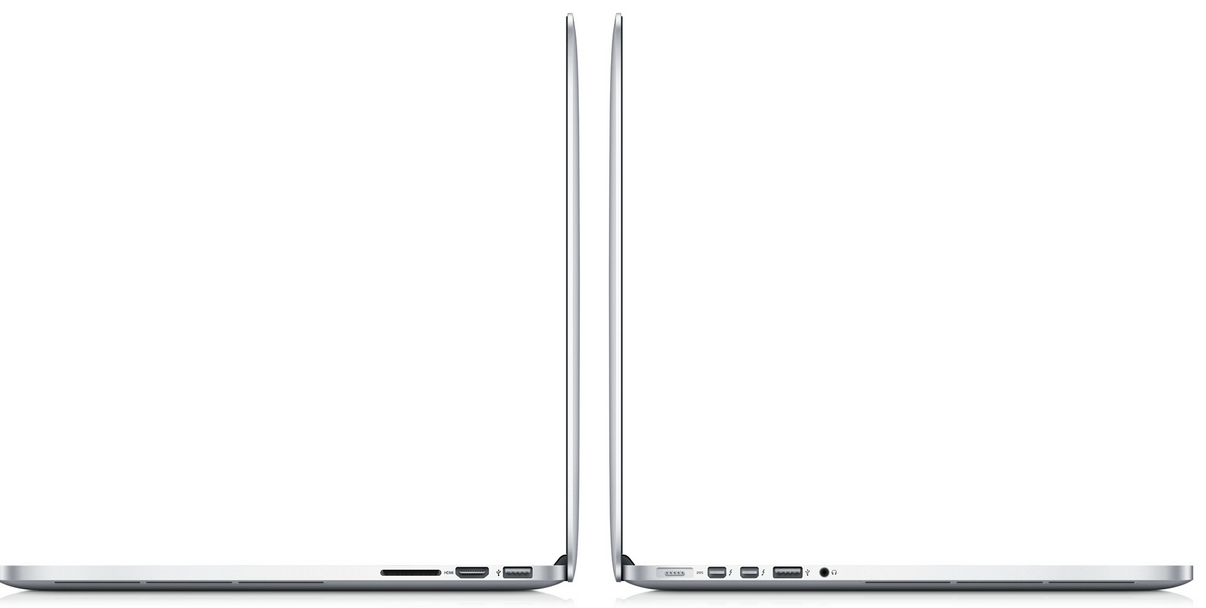Is the New MacBook Pro the Ultimate Ultra-Portable Live Stream Machine?
Due to its unprecedented screen resolution, speed, and next-gen connectivity, the new next-generation MacBook Pro, announced on Monday at Apple's World Wide Developers Conference, might just be the ticket for streaming media ultraportability, for a variety of reasons.
Page 1
What if you had the opportunity, in the field, to produce Full HD (1080p) content on a single monitor that was thinner than your index finger?
What if the entire computer, including a 2K monitor, was the same thickness (or thinness as the case may be)?
Monday's announcement of the new next-generation MacBook Pro might just be the ticket for streaming media ultra portability, for a variety of reasons.
Display
At the annual World Wide Developers' Conference (WWDC), held by Apple each June, the next-generation MacBook Pro was showcased with a never-before-seen screen resolution for a laptop (and, frankly, a resolution that's been available only in 27"-30" desktop monitors).
The 15.4" MacBook Pro has a display resolution of 220 pixels-per-inch (PPI) for an overall screen resolution of 2880x1800 pixels (Figure 1, below).

Figure 1. The 2880x1800, 220 PPI "Retina display"-equipped next-generation MacBook Pro
To put it into perspective, consider this: 1080p content being displayed on this new screen, at pixel-for-pixel resolution, still leaves about 60% of the overall screen real estate free for controls. If you think about how Flash Media Live Encoder (FMLE) 3.2 handles 1080p streaming content, the entire screen on a traditional high-resolution monitor is filled just by the video content.
On the new MacBook Pro monitor, not only could the full-resolution 1080p input be shown, but a full-resolution 1080p output could also be shown, and another 20% of screen real estate would still be available for settings and audio monitoring verification.
Yes, it's that big a deal. But not only is the PPI count of the new displays better than the new iPad 3, the whole package of the next generation MacBook Pro is almost 25 percent thinner than the current MacBook Pro.
Thin is In
It sounds like an overhyped pitch from a late-night infomercial: "Not only do you get it faster, brighter, and shinier, but it also costs less and is 25% thinner than the old model." That's all true, except for the price part. Apple's announced configuration for the next-generation MacBook Pro comes in around $2,200 versus $1,800-not a far cry, especially since the next-generation MacBook Pro uses SSDs (flash-memory-based solid-state hard drives).
Why is this new model so thin? Part of the reason lies in Apple's relentless pursuit in shedding "legacy" support-in the form of optical drives (CD and DVD burners), FireWire 800, and the bulky Ethernet port, the latter two being replaced by Thunderbolt dongles-that allowed Apple to thin down the input side of the chassis. But another large reason is that the new displays are integrated into the top portion of the chassis, with the solid aluminum block creating a rigid structure for the denser displays.
StreamingMedia.com covered recent codec advancements, such as those claimed by Ateme, that signal the advent of 2K, 4K, and even 8K streaming content, but until today's announcement, the best resolution on the market for laptop screens was a mere 1920x1080. We can't emphasize the screen size enough, but to drive that screen size, lots of graphics processing-think Kepler graphics from NVIDIA-and a bit of extra RAM is needed.
Processor Speed and RAM
The next-generation MacBook Pro doesn't disappoint: With a quad-core processor up to 2.6 GHz and up to 16GB of DDR3-1600 (1600 MHz) RAM, the processing of data through the Ivy Bridge Intel-based processor and memory controllers will prove significantly for multiple streams of HD content. Apple even claims that Final Cut Pro will handle up to nine video streams simultaneously on a single timeline.
SSD Storage
On the hard drive front, the SSD options are 512 GB or 768GB, slightly bettering the traditional hard drive sizes from the current MacBook Pro.
Connections
Besides the screen resolution, what makes the next-generation MacBook Pro a possible contender in the video-mixing market, maybe even giving some of the server-based video mixing and streaming products a run for their money?
Since the new laptop sports dual Thunderbolt connectors, each capable of 10 Gps transmit rates, as well as dual USB 3.0 (SuperSpeed) ports, each capable of 5 Gbps transmit rates, there is plenty of bandwidth available on the ingest side. These massive throughput options for Thunderbolt and USB 3.0, coupled with the higher-resolution screen and newer NVIDIA graphics cards, provide a compelling argument for portable streaming production in a very thin package (Figure 2).

Figure 2. Thunderbolt, USB 3.0, HDMI connectivity and no "legacy" optical drive, FireWire, or ethernet to weigh it or slow it down
Think about it this way: With Thunderbolt, PCI Express external analog-to-digital encoding boxes like the Blackmagic Intensity Pro can be used to input and output multiple analog or HDMI inputs, while using the USB 3.0 connections to add additional IP-based cameras to the mix. Given Thunderbolt's 10 Gbps throughput, a Gigabit Ethernet dongle for robust Ethernet connectivity would only take up one-tenth of the transmission throughput, leaving plenty of room for several SD or HD stream captures.
The next-generation MacBook Pro is shipping today, although it still ships with the Lion (OS X 10.7) operating system. A free upgrade to Mountain Lion (OS X 10.8) is available to anyone who purchases a MacBook Pro before Mountain Lion ships in July.
Page 1